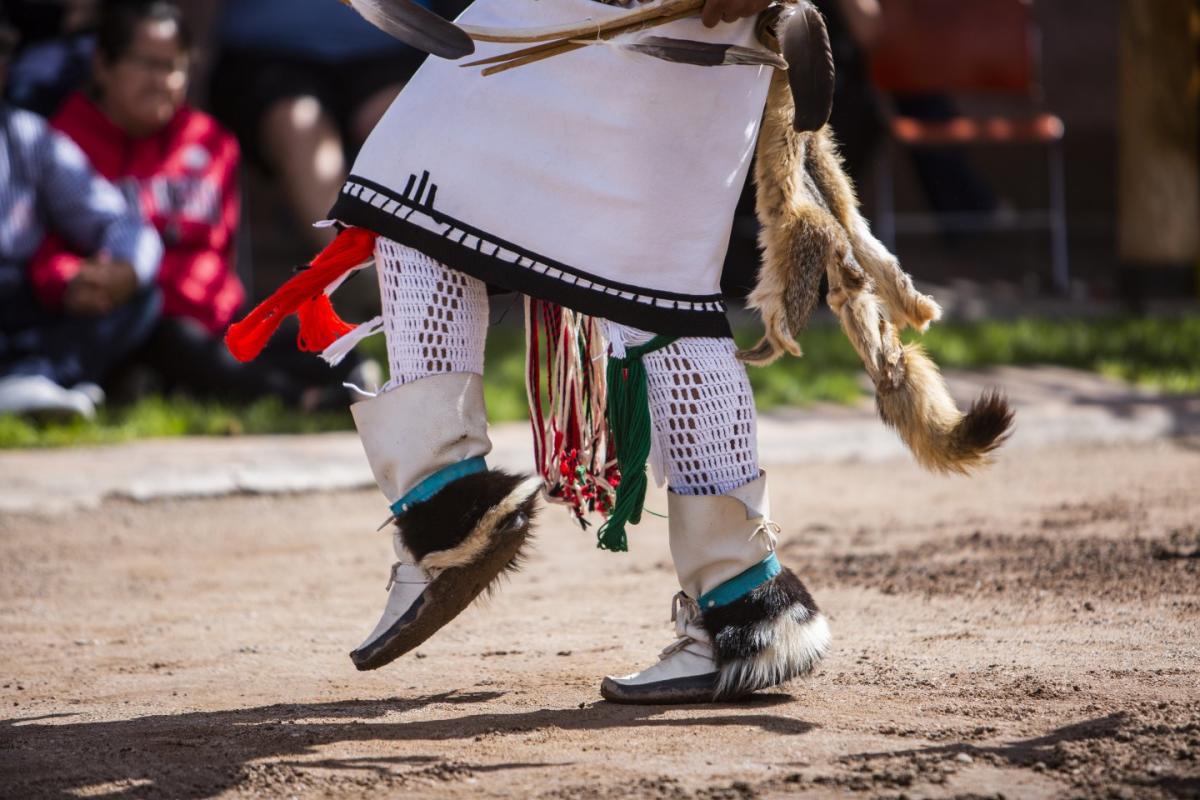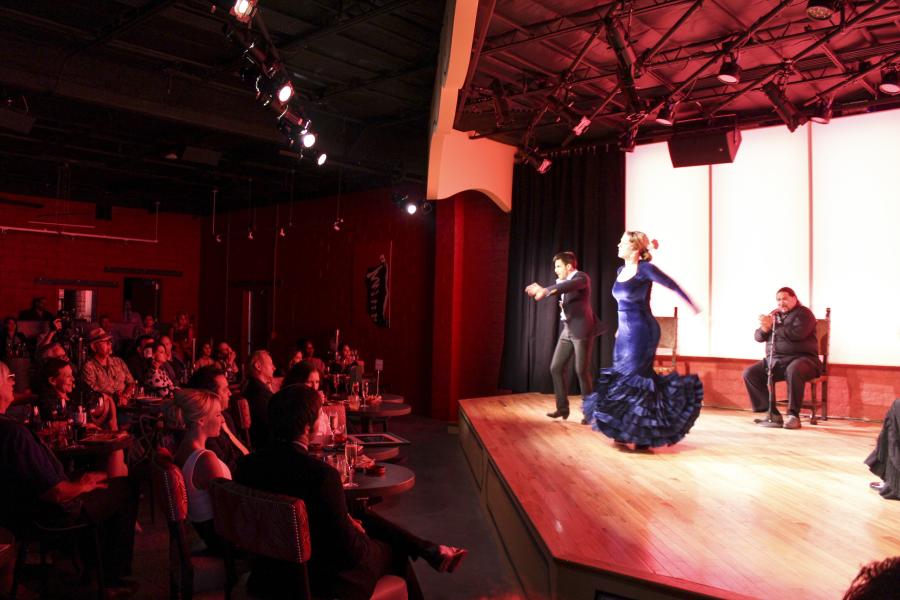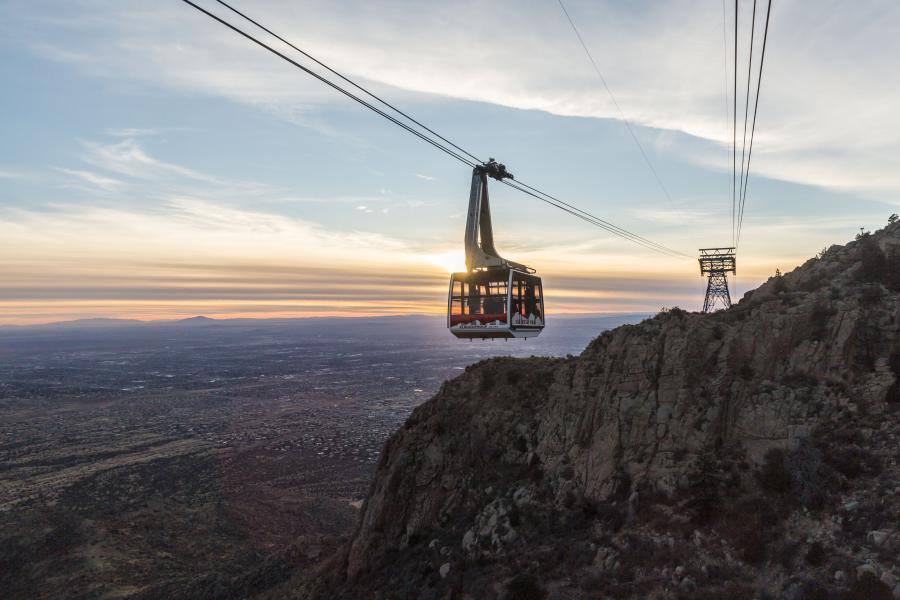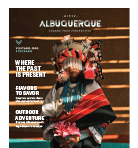Visit Albuquerque prohibits users from downloading images from our website.
Please use our media library for downloadable images and usage rights.
See More in this Section:
Travel a Thousand Years in Three Days
A visit to Albuquerque transcends time. We are a city of innovation, steeped in centuries of tradition. A place where hearts beat to the rhythm of modern life, but souls echo stories thousands of years old. Find out how three days in Albuquerque will captivate your imagination, transport you through time, and change you forever.
DAY 1: Native Heritage
Explore ancient petroglyphs left by the area’s earliest inhabitants and learn about the influence Native Americans have on the city today. There’s no better introduction to Albuquerque.
Start your day at Petroglyph National Monument, the site where thousands of images were carved in rock by Native Americans more than 700 years ago and, centuries later, by Spanish settlers traversing the area. Many of the petroglyphs are sacred symbols with religious or tribal meanings that still have cultural significance today. The monument stretches along ancient volcanic lava flows. Wear sturdy shoes, choose any of the well-maintained trails, and walk among the ancient designs.
The Indian Pueblo Cultural Center features the history, art and culture of New Mexico’s 19 Native American Pueblos. The museum traces the legacy and modern lives of pueblo peoples, and the mural collection vividly celebrates the role of the seasons, harvests and animals to Native American life. Visit on a weekend for free dance performances, bread baking, craft demonstrations and other programs. Be sure to stop at the Indian Pueblo Kitchen, where the creative menu is centered around indigenous ingredients, for lunch.

Acoma Pueblo, an hour drive west of Albuquerque, is the oldest continuously inhabited city in the United States. A trip to the pueblo is truly like stepping back in time. The residents live without electricity or running water on top of the mesa in the original adobe buildings. Today, visitors can take a guided tour of the pueblo and even walk through the mission church, built in the early 1600s. Acoma Sky City Cultural Center focuses on preservation of the pueblo’s history, and the Haak’u Museum showcases art and artifacts, including the thin-walled, hand-coiled pottery Acoma artists are known for.
DAY 2: Hispanic Traditions
Albuquerque’s Hispanic heritage is woven into our cuisine, art, architecture and celebrations. Spend a day getting to know our Hispanic traditions.
From its birthplace in Historic Old Town in 1706, Albuquerque has grown from a small village named for a Spanish Duke into one of the Southwest’s premier metropolitan centers. Don’t miss the enchanting Old Town galleries filled with local sculptures, pottery and jewelry. Old Town restaurants serve refreshing margaritas and flavorful New Mexican cuisine on beautiful patios or in adobe haciendas. After one bite, you’ll understand why red and green chile are the stars of the culinary scene in Albuquerque and are creatively incorporated into almost any dish, from breakfast to dessert.
While in Old Town, relax at one of the wine bars at Plaza Don Luis to try a glass of finely crafted local wine. In fact, the state is the oldest wine-making region in the nation. The Spaniards who settled in New Mexico in the 1500s brought a rich wine-making tradition with them, and grapes have been cultivated here ever since. Gruet Winery, Casa Rondeña Winery, Vara Winery & Distillery and D.H. Lescombes Winery & Bistro are among the many excellent spots to enjoy a glass or a try a wine flight.
Just a short distance from Old Town is the ABQ BioPark Botanic Garden, where you’ll find a curandera garden. The garden honors traditional folk healers, known as curanderas, who incorporated native plants in their home-made herbal remedies.
In the afternoon, visit the National Hispanic Cultural Center, dedicated to preserving the rich heritage of the Hispanic community worldwide. The art museum includes traditional works such as punched tin and wooden carvings of saints (known as bultos), as well as contemporary exhibits of photography, sculpture and more. In the Center’s Torreón is “Mundos de Mestizaje,” a magnificent fresco that depicts thousands of years of Hispanic history. At 4,000 square feet, it is one of the largest frescoes in North America.
There’s no better way to end the day than with a thrilling flamenco performance accompanied by traditional Spanish tapas. Albuquerque, known as the Flamenco Capital of North America, is home to the National Institute of Flamenco and to a large community of performers and teachers dedicated to preserving the art. Catch a show at Tablao Flamenco Albuquerque, an intimate performance space inside Hotel Albuquerque at Old Town; at Casa Flamenca, which features internationally known artists; and during the annual Festival Flamenco Alburquerque each summer. The energetic, high-intensity performances will captivate your emotions and stir your soul.

DAY 3: Modern Albuquerque
Today begins and ends with soaring views of the city, as you watch the sun rise from the gondola of a hot air balloon and then gaze upon a stunning sunset from the top of the Sandia Mountains. In between, enjoy some of the best that Albuquerque has to offer.
Wake up early for a hot air balloon ride that has you floating serenely above the cottonwood-lined Rio Grande. Our spectacular weather, with more than 310 days of sunshine a year, means private balloon rides are available year-round.
You’ll be back on the ground by 9 or 10 a.m., leaving plenty of time to explore. If you want to continue the outdoors theme, adventures await every type of enthusiast. The city boasts more than 400 miles of dedicated cycling trails, including the 16-mile Paseo del Bosque Trail that follows the Rio Grande. For those looking for more adventurous terrain, mountain bike trails loop through the Sandia foothills. Rock climbing, hiking and kayaking are popular year-round, and the city’s public and private golf courses range from manicured fairways to challenging high-desert links (and even a Topgolf location).
If you’d rather head inside, mornings are a great time to browse one of the city’s many museums. Head to the Albuquerque Museum for art and history, or visit a specialty museum such as the Turquoise Museum, the American International Rattlesnake Museum or the National Museum of Nuclear Science & History. Kids will love the hands-on activities at ¡Explora! and the dinosaur fossils at the New Mexico Museum of Natural History & Science.
For a late lunch, check out one of the city’s food halls. Sawmill Market is an artisanal food hall, with offerings that include a French bakery, a small-batch chocolatier and a Venezuelan bistro. On Route 66 and in the heart of Downtown you’ll find 505 Central Food Hall, a perfect spot for fresh tacos, thick slices of pizza and juicy burgers. The craft beer scene is strong in Albuquerque as well, with dozens of breweries and taprooms pouring award-winning IPAs, stouts and ambers. Local favorites include Steel Bender Brewyard, Tractor Brewing Co., Marble Brewery and Rio Bravo Brewing Co.

End the day with a ride on the Sandia Peak Aerial Tramway, North America’s longest aerial tramway. In just 15 minutes, you’ll glide from the city elevation of 6,500 feet to the mountain crest at more than 10,300 feet. At the top, marvel at the breathtaking 11,000-square-mile panoramic view of the city and the high desert landscape. Take in the majestic colors of a New Mexican sunset, and then enjoy a cocktail and meal at TEN 3, where you can watch the twinkling city lights while you dine. It’s a spectacular way to say farewell to your thousand-year journey through Albuquerque.


